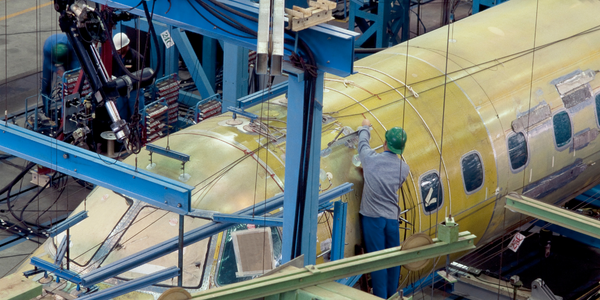Download PDF
Avemex's Successful Upgrade with Honeywell Amidst ADS-B Mandate

Technology Category
- Functional Applications - Computerized Maintenance Management Systems (CMMS)
- Sensors - GPS
Applicable Industries
- Aerospace
Applicable Functions
- Maintenance
The Challenge
Grupo Avemex, a Mexico-based company offering a full range of business aviation services, faced a significant challenge. As a Federal Aviation Authority (FAA) repair station and Directorate General of Civil Aeronautics (DGAC) maintenance workshop, Avemex provides aircraft on ground (AOG) technical support, major structural repairs, retrofits, modifications, and upgrades (RMUs). Being a Honeywell partner for over 30 years, Avemex is a premium dealer and supports all of Honeywell’s avionics solutions. However, with the upcoming mandate for ADS-B Out, which requires aircraft to use precise GPS data to accurately pinpoint its position in real-time and broadcast this data to surrounding aircraft and air traffic control (ATC), Avemex anticipated that aircraft operators would encounter issues when looking for upgrades.
The Customer
Avemex
About The Customer
The customer in this case study is an international consulting firm based in Mexico that owns a 20-year-old Cessna Citation X. This aircraft operates flights across North America to destinations including New York and Toronto. The firm was facing a challenge due to the upcoming mandate for ADS-B Out compliance. The shortage of service centers and certified equipment for all the work to be completed was expected to get worse every week, according to the aircraft’s chief pilot, Manual Vargas Ruiz.
The Solution
To address this challenge, Avemex decided to implement the ADS-B Out solution. This technology enables an aircraft to use precise GPS data to accurately pinpoint its position in real-time and to broadcast this data – along with its identification, altitude, and velocity – to surrounding aircraft and air traffic control (ATC). The information is broadcast every second and can be received by ATC ground stations as a supplement to secondary radar. Aircraft that are equipped with ADS-B In can also receive the data to provide improved situational awareness. As the mandates near, Avemex anticipated that aircraft operators will encounter issues when looking for upgrades. One of the first aircraft to have ADS-B Out installed by Avemex was a 20-year-old Cessna Citation X.
Operational Impact
Quantitative Benefit
Related Case Studies.

Case Study
Airbus Soars with Wearable Technology
Building an Airbus aircraft involves complex manufacturing processes consisting of thousands of moving parts. Speed and accuracy are critical to business and competitive advantage. Improvements in both would have high impact on Airbus’ bottom line. Airbus wanted to help operators reduce the complexity of assembling cabin seats and decrease the time required to complete this task.

Case Study
Aircraft Predictive Maintenance and Workflow Optimization
First, aircraft manufacturer have trouble monitoring the health of aircraft systems with health prognostics and deliver predictive maintenance insights. Second, aircraft manufacturer wants a solution that can provide an in-context advisory and align job assignments to match technician experience and expertise.

Case Study
Aerospace & Defense Case Study Airbus
For the development of its new wide-body aircraft, Airbus needed to ensure quality and consistency across all internal and external stakeholders. Airbus had many challenges including a very aggressive development schedule and the need to ramp up production quickly to satisfy their delivery commitments. The lack of communication extended design time and introduced errors that drove up costs.

Case Study
Developing Smart Tools for the Airbus Factory
Manufacturing and assembly of aircraft, which involves tens of thousands of steps that must be followed by the operators, and a single mistake in the process could cost hundreds of thousands of dollars to fix, makes the room for error very small.

Case Study
Accelerate Production for Spirit AeroSystems
The manufacture and assembly of massive fuselage assemblies and other large structures generates a river of data. In fact, the bill of materials for a single fuselage alone can be millions of rows of data. In-house production processes and testing, as well as other manufacturers and customers created data flows that overwhelmed previous processes and information systems. Spirit’s customer base had grown substantially since their 2005 divestiture from Boeing, resulting in a $41 billion backlog of orders to fill. To address this backlog, meet increased customer demands and minimize additional capital investment, the company needed a way to improve throughput in the existing operational footprint. Spirit had a requirement from customers to increase fuselage production by 30%. To accomplish this goal, Spirit needed real-time information on its value chain and workflow. However, the two terabytes of data being pulled from their SAP ECC was unmanageable and overloaded their business warehouse. It had become time-consuming and difficult to pull aggregate data, disaggregate it for the needed information and then reassemble to create a report. During the 6-8 hours it took to build a report, another work shift (they run three per day) would have already taken place, thus the report content was out-of-date before it was ever delivered. As a result, supervisors often had to rely on manual efforts to provide charts, reports and analysis.






